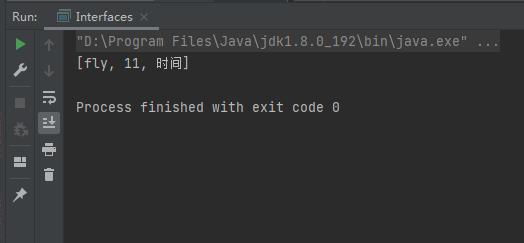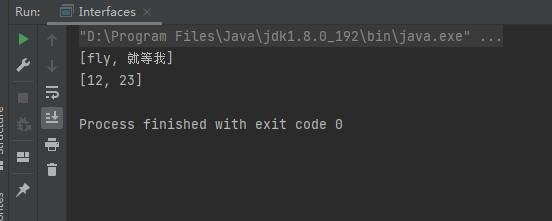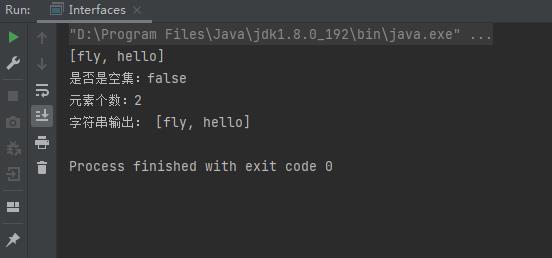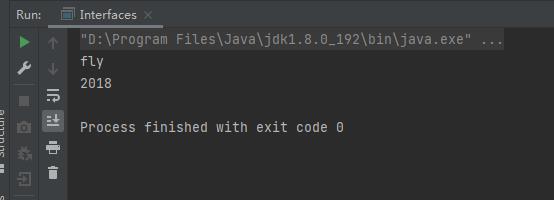过来集合啦,Java的小伙伴们
Posted Fly With Wen
tags:
篇首语:本文由小常识网(cha138.com)小编为大家整理,主要介绍了过来集合啦,Java的小伙伴们相关的知识,希望对你有一定的参考价值。
目录
1.集合框架
Java
集合框架
Java Collection Framework
,又被称为容器
container
,是定义在
java.util
包下的一组 接口 interfaces
和其实现类
classes
。
其主要表现为将多个元素
element
置于一个单元中,用于对这些元素进行快速、便捷的存储
store
、检索 retrieve 、管理
manipulate
,即平时我们俗称的增删查改
CRUD
。
2.集合框架的优点及作用
使用成熟的集合框架,有助与我们便捷、快速的写出高效、稳定的代码
学习背后的数据结构知识,有助于我们理解各个集合的优点及使用场景
3 Collection 接口
3.1方法
Collection接口是用来存储管理一组对象objects , 这些对象一般被称为元素 elements
常用方法

3.2Collection接口引用顺序表
在没有指定是什么类 类型时,顺序表中的元素可以随意添加
import java.util.*;
public class Interfaces
public static void main(String[] args)
//接口可以引用的类
Collection collection = new ArrayList();
//没有指定类型可以随意添加元素
collection.add("fly");
collection.add("11");
collection.add("时间");
System.out.println(collection);

<E>是泛型,可以指定是某个特定的类 类型,不能是基本类型
下面我们来看 String 类和 Integer 类
import java.util.*;
public class Interfaces
public static void main(String[] args)
//String 类只能添加字符或者字符串,不能添加数字或者其它,否则会报错
Collection<String> collection = new ArrayList<String>();
collection.add("fly");
collection.add("就等我");
System.out.println(collection);
//Integer 类只能添加数字,不能添加字符或者字符串等其它,否则会报错
Collection<Integer> collection1 = new ArrayList<Integer>();
collection1.add(12);
collection1.add(23);
System.out.println(collection1);

size()方法和isEmpty()的使用
import java.util.*;
public class Interfaces
public static void main(String[] args)
Collection<String> collection = new ArrayList<String>();
collection.add("fly");
collection.add("hello");
int n = collection.size();//集合中元素个数
System.out.println(collection);
System.out.println("是否是空集:"+collection.isEmpty());//判断集合是否没有元素,
System.out.println("元素个数:"+n);
//转换成数组输出
Object[] objects = collection.toArray();
System.out.println("字符串输出: "+Arrays.toString(objects));

3.3Map 接口
Map<k,v>接口类型,k 、v 这两个类类型可以自己指定
import java.util.*;
public class Interfaces
public static void main(String[] args)
Map<String,String> map = new HashMap<>();
map.put("路过","张嘉佳");
map.put("时间","2018");
System.out.println(map);

v get(object k),指定k查找对应的v
import java.util.*;
public class Interfaces
public static void main(String[] args)
Map<String,String> map = new HashMap<>();
map.put("路过","张嘉佳");
map.put("时间","2018");
String ret = map.get("路过");
String ret2 = map.get("时间");
System.out.println(ret);
System.out.println(ret2);

//v getOrDefault(object k, v defaultValue);指定k查找对应的v,没有找到用默认值代替
import java.util.*;
public class Interfaces
public static void main(String[] args)
Map<String,String> map = new HashMap<>();
map.put("路过","张嘉佳");
map.put("时间","2018");
String ret3 = map.getOrDefault("作者","fly");//没有找到,用fly代替
String ret4 = map.getOrDefault("时间","fly");//找到则输出对应时间
System.out.println(ret3);
System.out.println(ret4);

以上是关于过来集合啦,Java的小伙伴们的主要内容,如果未能解决你的问题,请参考以下文章